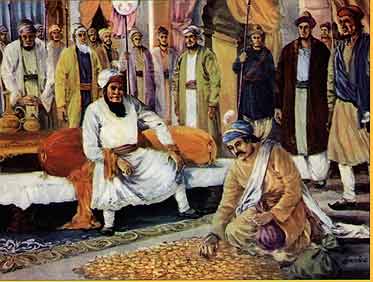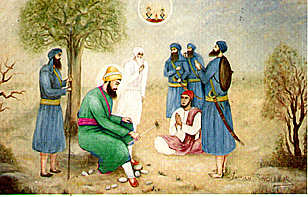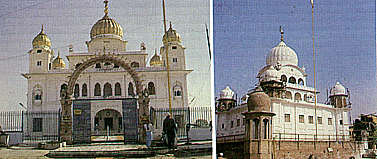
With the objective of killing or capturing Guru Gobind Singh, the joint forces of the emperor of Delhi and the rajas of Himachal Pardesh attacked Anandpur Sahib. They encircled the town, and did not allow any food to be taken inside, in the hope of starving the Guru and his followers out. They lost thousands of men while attacking the Guru who was occupying the forts. Having failed to defeat the Guru, they promised him. on solemn oath, a safe passage if he voluntarily left the place. They further assured him that later on, he could come back again to Anandpur as and when he desired. The army generals hoped to give the emperor an image of their victory if they could make the Guru leave Anandpur Sahib.
When the Guru left the fort, the generals broke their oath and the army attacked him with all their might. To make conditions worse for the Sikhs, the nearby river Sirsa was in flood. While fighting and crossing the river, many Sikh lives were lost and those who could cross the river were dispersed. Guru Gobind Singh with his two elder sons and only 40 Sikhs reached a nearby village called Chamkaur where they occupied a mud house called garhi, a mini fort.
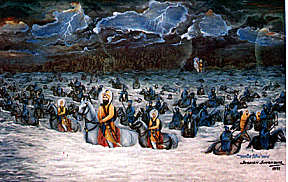
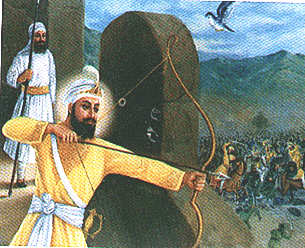
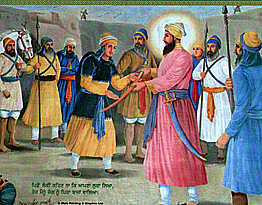
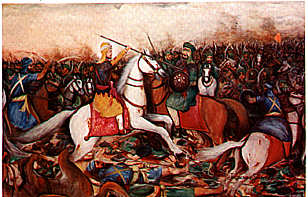
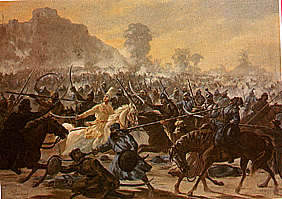
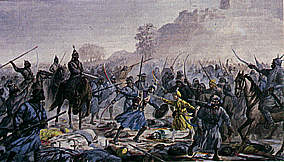
The Guru thanked the Almighty that his children attained martyrdom before his own eyes. They gave their lives so that other children could live in peace and freedom from oppression by the state. The resistance offered by the fearless and brave Sikhs was so great that the soldiers could not enter the Garhi during the daylong fighting.
At night the Guru along with three Sikhs left the Garhi and passed safely through the army camps to finally defeat the army at Mukatsar five months after that. This unique and great sacrifice by the sons of the Guru would be remembered forever by the people who respect human rights and freedom to worship.
The Guru before leaving the Garhi of Chamkaur, put his attire and his plume on Bhai Sant Singh (Sangat Singh), who looked like the Guru. The Mughals thought they were fighting the Guru, while the Guru escaped after challenging them
iek Swier ies nUM ieMj ibAWn krdw hY: "bYTw cmkOr dI AtwrI BweI sMq isMG, bwx vrKwvy vYrI jwxy dsmyS hY["
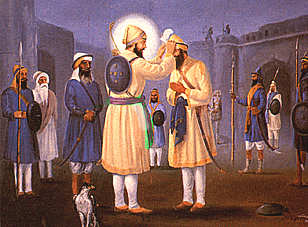
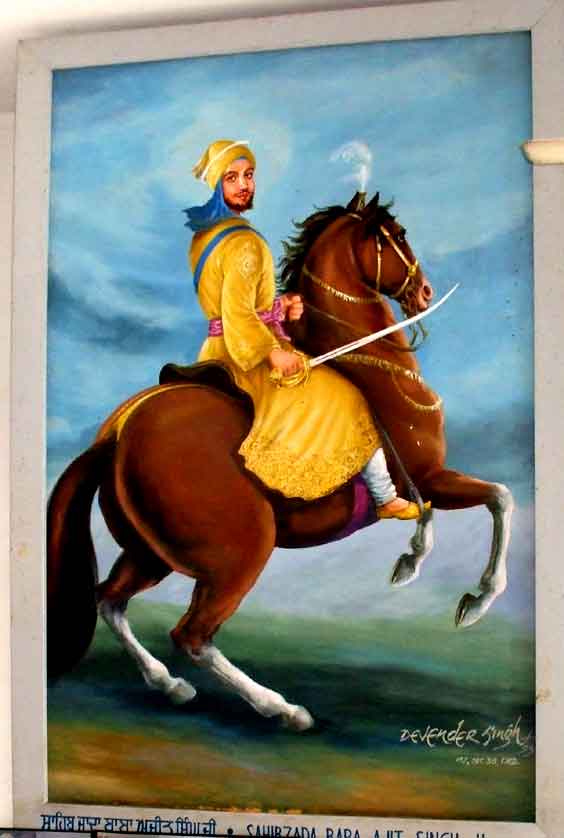 Sahibzada Baba Ajit Singh
Sahibzada Baba Ajit Singh
Note: The Guru along with the two pyaras, Bhai Daya Singh and Bhai Dharam Singh left the garhi at night, leaving Bhai Sangat Singh and a few others behind. They were told to keep the army engaged the next day when the fighting restarts. In the morning when the army attacked the Sikhs they were ready to defend themselves. Finally when all Sikhs fell fighting, the soldiers entered the Garhi. The commanders were overjoyed to see the dead body of Sangat Singh because they mistook him for the Guru. Later, when more people were shown the dead body, they identified it not to be that of Guru Gobind Singh. The commanders felt ashamed of their failure to kill or capture the Guru.
MARTYRDOM OF BABA ZORAWAR SINGH and BABA FATEH SINGH
Why lose your faith to save your life Faith lives with you, even after you die.
The joint forces of the emperor and the rajas of Himachal, not considering their solemn promises to the tenth Guru, attacked him when he left the Anandpur Sahib. It was a cold winter night of December, 1704. An attack by the enemy forces and difficulties of crossing the flooded Sirsa River resulted in the separation of the Sikhs. As mentioned above , Guru Gobind Singh with his two elder sons and forty Sikhs reached the village Chamaur, two younger sons of the Guru and his mother were lost and reached the village of Kheri. They went to the house of Gangu, who used to serve them at Anandpur. To obtain reward from the government for helping to arrest the children and the mother of the Guru, Gangu reported the matter to the police stationed at Morinda The policemen quickly came to Gangu's house, arrested them and took them to the Governor of Sirhind to obtain rewards for catching the "rebels".
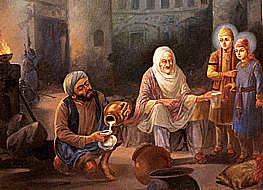
What greater catch could the governor dream of than capturing alive the family of the Guru, particularly because he had failed to kill the Guru? He decided to convert the young sons of the Guru to Islam by any means. He offered much bait to the children and made promises of royal life if they agreed to become Muslims. The boys, however, remained firm in their faith. Therefore, the governor adapted the force and a harsh attitude to pressure them into becoming Muslims.
To torture them, the children and their grandmother were locked up in a watchtower, which was very cold. They sat all night without even a blanket to put around them. The elder son. Baba Zorawar Singh was Just 8 years old, while the younger son, Baba Fateh Singh was only 6 years old.
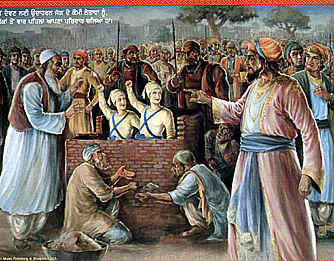
The children exhibited no fear at all when they were presented the next day, in the court of Wazid Khan, the governor. They acted gracefully like princes and with great self-confidence uttered, Waheguru Ji Ka Khalsa, Waheguru Ji Ki Fateh. This angered Wazid Khan very much. He was annoyed that the children had not bowed before him, to show him respect. He personally threatened them with many forms of punishment and torture if they did not act according to his wishes and embrace Islam. The children again firmly refused to give up their faith.
Having failed to frighten the children and mold them to his wishes, Wazid felt humiliated. When Baba Zorawar Singh and Fateh Singh bluntly told him they would not adopt Islam under the threats of death or torture, he ordered them to be bricked alive in a wall.
While being bricked, the children showed no sign of fear or sadness on their faces. When asked to save their lives by giving up their faith, they again firmly said, "No!" When the wall reached their shoulders, it is said it fell down. The children were taken out from the debris and were heartlessly murdered in cold blood.
This sacrifice of Guru Gobind Singh's sons, only six and eight years old, will forever be remembered by young and old alike to learn lessons from their lives. Firm belief in faith, freedom of worship, and refusal to submit to any kind of attack by rulers is the way to live or to die.
